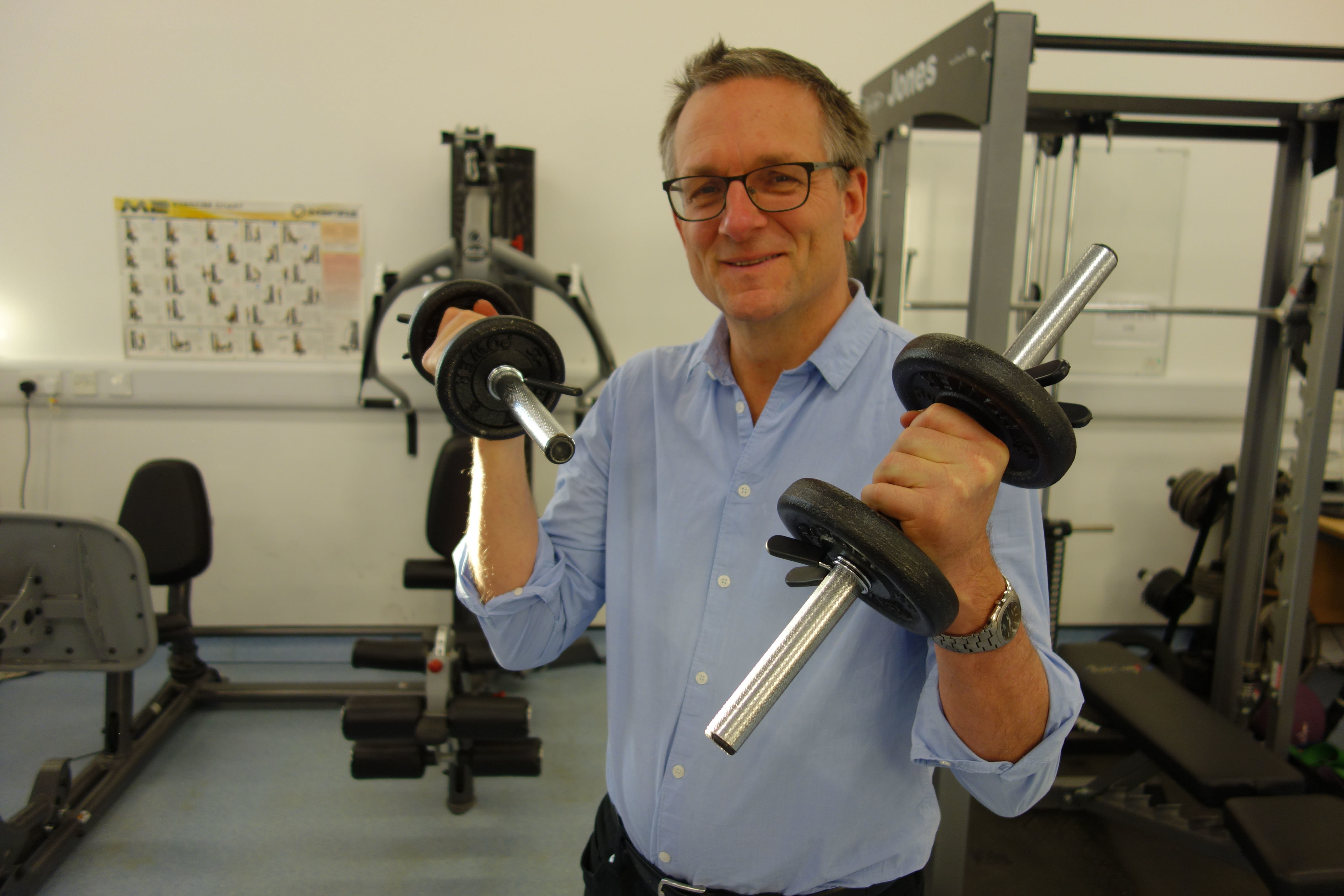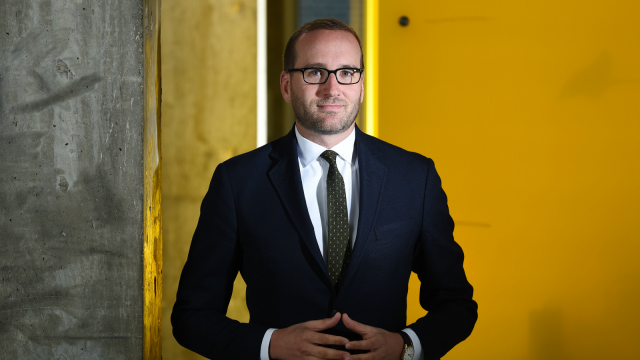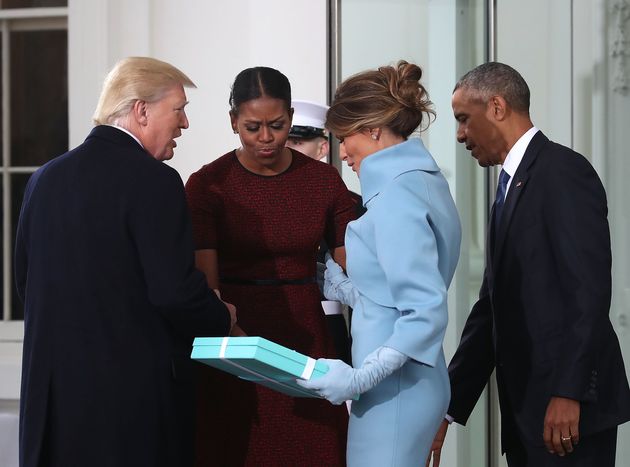‘The Truth About Getting Fit’: Five Exercise Lessons From The BBC Show
Improving your fitness doesn’t demand marathon-length runs or spending every night in the gym. In new BBC show ‘The Truth About Getting Fit’, medical journalist Michael Mosley teamed up with leading scientists to investigate how we can workout more smartly.
Their findings will be welcome news to those who feel like they don’t have enough time to work out, or find themselves unmotivated or intimidated by going to the gym. (In the UK we waste nearly £600m a year on unused gym memberships.) These are five lessons we took away from the show.

1. You don’t need a personal trainer to test your current fitness level
According to Mosley, you can embark on your fitness journey for free by testing your base level of fitness in your living room.
One way of doing this is by finding out how long it takes you to stand up and sit down from a chair 10 times, without using your hands. All you need is a hard chair and a way to time yourself to get a “quick but relatively accurate” idea of your current fitness level.
As a loose rule it’s a case of the faster, the better. But men under 35 should be able to do 10 chair stands in 10 seconds or less, while women of the same age should be able to compete 10 in 12 seconds. Men aged 35-55 should be able to complete the test in 13 seconds, women in 15 seconds. Finally, men over 55 are considered in good physical fitness if they can complete the test in under 18 seconds, while women of the same age should aim for under 19 seconds.
2. 10,000 steps per day isn’t the holy grail of fitness
Walking 10,000 steps per day has been widely adopted as a health goal, with 13 million Brits now tracking their steps each day. But research suggests the 10,000 figure is pretty arbitrary when it comes to improving your fitness level.
“In the run up to the Tokyo Olympics in 1964, a company came up with a device they called a ‘mampo-metre’, now that literally means a 10,000 step metre. That magical figure didn’t come as a result from rigorous scientific studies, but was the result of a clever marketing campaign,” Mosley explained in the show.
With the help of six volunteers and supporting researchers, he investigated what might have the greatest impact on fitness: walking 10,000 steps per day or completing three 10-minute sessions of brisk walking per day (equalling around 3,000 steps), known as ‘Active 10’. A brisk walk should make you a bit out of breath but shouldn’t be gruelling. As Mosley said, “you should be able to talk, but not sing”.
The volunteers were split into two groups and given activity trackers to wear. The first group incorporated 10,000 steps into their day, while the second completed Active 10.
On comparing the data from the trackers by the end of the week, although the Active 10 group spent less time moving, they completed 30% more “moderate to vigorous activity” than the first group. This is the type of activity that has the most health benefits, and is linked to lowered risk of diabetes and heart disease.
3. Just two minutes of exercise per week could improve your fitness
High intensity interval training, or HIIT, could be the key to upping your fitness if you’re short on time. In fact, just two minutes per week could make a difference.
During the show Mosley enlisted the help of a group of office workers to test the impact of completing HIIT cycling sessions. Three times per week, the volunteers peddled as hard as possible for 20 seconds on an exercise bike, took a brief break, then peddled as hard as they could for another 20 seconds. This added up to just two minutes of intense exercise per week.
At the start of the experiment, a team of scientists tested the groups’ aerobic fitness by monitoring their oxygen levels while using an exercise bike. When the test was repeated five weeks later, the volunteers had increased their level of aerobic fitness by 11%.
Using an ultrasound scanner, the scientists were also able to see how HIIT altered the muscles. Just one session reduced the amount of glycogen (sugar) in muscles by 24% – you would have to jog for between three to five minutes to achieve the same results. This reduction will trigger other beneficial changes in the body, such as improved cardiovascular health.
“All exercise releases some glycogen from our muscles, but HIIT does it faster and more effectively,” said Mosley.
4. Dance could be the best exercise for the brain
According to Mosley, there is plenty of evidence that exercise is good for the brain, but dance seems to be “unusually beneficial”. As well as being physically active, dance classes require participants to multitask, learn a series of steps, remember the sequence and keep in time with the music.
To test the impact this has on the brain, a group of salsa dancers agreed to complete a series of mental tests to analyse their base level of intelligence and reflexes. One of the tests monitored decision-making and ability to avoid distraction, another looked at working memory and the ability to recognise patterns. The final test analyses our ability to anticipate and judge how fast objects are moving through space.
After 30 minutes of fast-paced salsa, the participants repeated the tests and improved in each and every area. Most notably, their scores for working memory improved by 18%. The scientists noted that they hadn’t seen a result like this for any other type of exercise, including running.
5. Bigger isn’t better when it comes to weights
Once you reach 35 you start to lose around 1% of your muscle mass each year, so building muscle is an important part of maintaining your overall fitness. The good news is you can benefit without lifting enormous weights.
A group of newbie weightlifters agreed to test lifting both heavy and light weights. They were instructed to curl a heavy weight with their right arm until they can’t keep going, then repeat the exercise on their left side with a light weight. The volunteers also did this with heavy and light weights on their legs.
After six weeks of gym sessions repeating these exercises, the researchers re tested their strength – only to find the size of the weight “didn’t make any difference”.
Arm strength increased by 18% across the group and leg strength by 25% – on both sides. And the participants didn’t appear lopsided because they were able to work out for longer with smaller weights.
www.huffingtonpost.co.uk/entry/the-truth-about-getting-fit-five-lessons-we-learned-from-the-bbc-show_uk_5a71a97de4b0ae29f08c85ff











